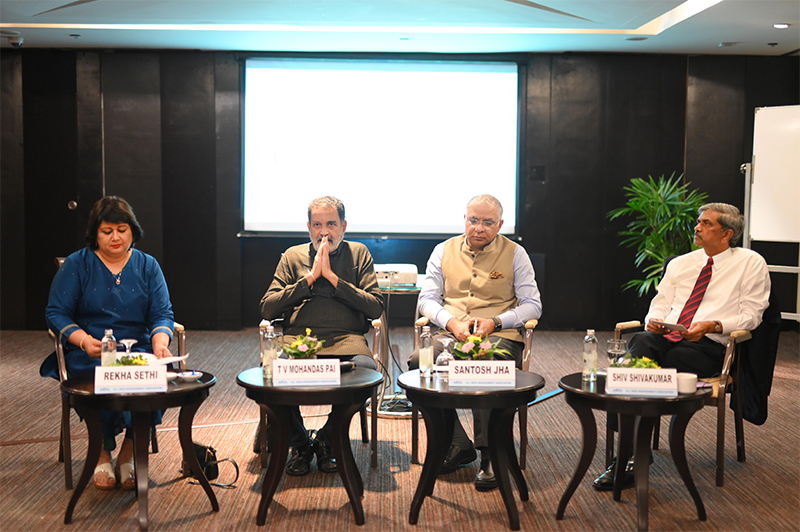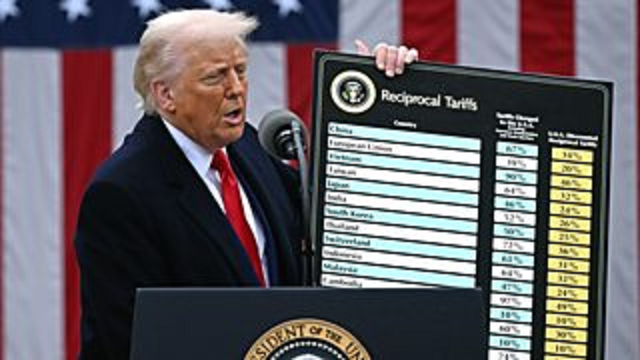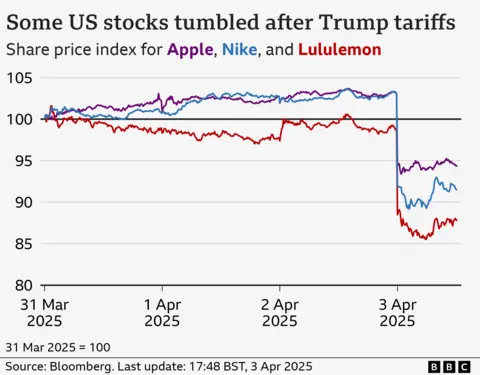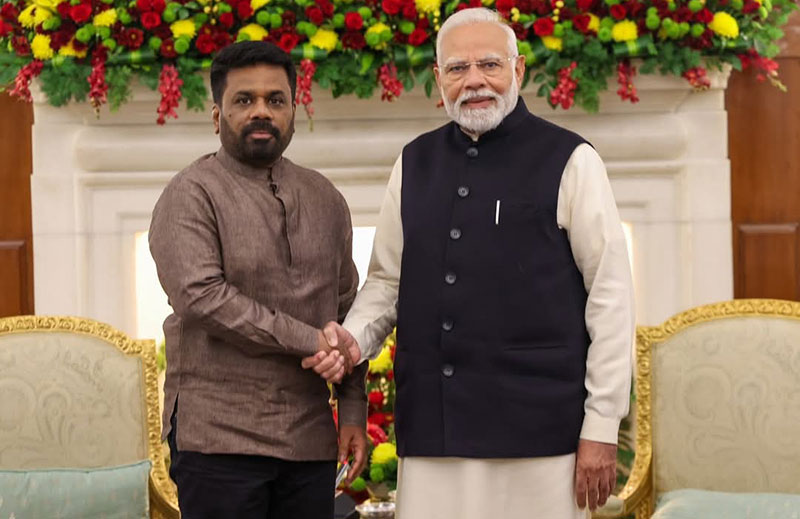Business
India, first country to back Sri Lanka’s IMF relief programme – IHC Santosh Jha

By Ifham Nizam
In overcoming the worst crisis in Sri Lanka’ s history, the country’s neighbor, India, became the leading backer of the International Monetary Fund (IMF) relief programme, India’s High Commissioner to Sri Lanka Santosh Jha said.
“Our desire to work closely with the government and the people of Sri Lanka manifested most visibly during the Covid-19 pandemic and the economic crisis in Sri Lanka in 2022. Our response was driven by our neighbourhood-first policy, which is based on a strong sense of solidarity and an outcome based, non- reciprocal and generous approach, H.C. Jha said at a recent forum held at the Cinnamon Grand, Colombo titled, ‘Colombo Leadership Retreat: Aspire, Achieve, Inspire: Women in Leadership Roles’.
H.C. Jha added: ‘India stood shoulder- to- shoulder with the people of Sri Lanka as a trusted and reliable friend. We provided foreign exchange support as well as helped to source essential items like fuel, food and medicines from India. Overall, we deployed concessional loans and credit facility of around USD 4 billion.
‘I congratulated the All India Management Association (AIMA) for organizing the event to promote dialogue about and between the women leaders of India and Sri Lanka.
‘I am confident that such events will not only bring the peoples of our two countries together and forge deeper economic, social and intellectual exchanges but will help in promoting greater access for women to leadership roles in all sectors and organizations.
‘I am delighted that AIMA has gathered some top business leaders from India and Sri Lanka to address this exclusive event over the next three days. The presence of leaders of the industry such as Mr Pai and Mr Shivakumar here today attest to the importance and seriousness attached to this event.
‘The visit of President Ranil Wickremesinghe to India in July 2023 had created further momentum to the multifaceted partnership. During the visit, our countries adopted a vision document for strengthening India-Sri Lanka ties, centred on enhanced connectivity and promoting a deeper economic partnership. Our governments are closely working together to transform this vision into reality.
‘We are exploring synergies in new areas to achieve our economic and developmental aspirations jointly.
‘India strongly advocated international support for Sri Lanka at various fora. We were the first country to provide financing assurances to the IMF for the Extended Fund Facility programme to Sri Lanka. We co-chaired an Official Creditors Committee with Sri Lanka’s other bilateral creditors to hold discussions on debt restructuring.
`As in other neighbouring countries, development partnership is one of the strongest pillars of our bilateral relationship with Sri Lanka. We are undertaking projects through concessional lines of credit and grant assistance. Our support is to the tune of USD 5 million. We are involved in rehabilitation and modernization of Sri Lanka Railways; construction of houses for the poor; solar electrification of religious places; port development, renewable energy and connectivity, among others. One of the principal vehicles for project implementation has been the high impact community development project. This is particularly useful as it enables us to implement a larger number of relatively smaller projects with high community impact. It also enables us to cover all the different provinces of Sri Lanka, including remote locations and underprivileged sections.
‘Apart from this, India’s private sector is also contributing to infrastructure development in Sri Lanka. The newest addition to Sri Lanka’s skyline, ITC, is built with an investment of about USD 500 million.
`The West Container Terminal at Colombo Port and renewable energy projects in the North are some other shining examples of recent Indian investments in Sri Lanka. These projects are a symbol of the trust that Indian companies repose in the Sri Lankan economy and its people.
‘We are advancing multiple energy connectivity initiatives. These include the power grid connectivity, eventually to enable Sri Lanka to export power to India; the multiproduct pipeline to Trincomalee, which will help advance the Trincomalee Tank Farms and Harbour interests; and we are also working to set up a virtual LNG pipeline from Kochi to Colombo. These are in addition to the power projects that I have mentioned earlier, which along with the NTPC solar power project at Sampur promises to transform the Sri Lankan energy mix and profile.
‘It is well known that India is Sri Lanka’s largest trading partner. In 2022, bilateral merchandise trade between India and Sri Lanka stood at USD 6 billion.
`Our governments have recently resumed discussions on the Economic and Technology Cooperation Agreement, which seeks to further advance our trade and economic partnership beyond the Free Trade Agreement, which came into force in 2000. Once signed, it will help in achieving the true potential of the India-Sri Lanka trade partnership. If we go by the FTA experience, it will enable Sri Lanka to significantly expand its exports both in goods and services to India. This is also our objective in keeping with our Neighbourhood-First policy.
‘India has also been the largest source of investments to Sri Lanka in the past four years. We continue to work to generate greater interest among Indian industries to maintain this trend. Investments in infrastructure, energy, renewable energy, transport and telecommunications, among others, are likely to assist us in this regard.
`In the last 10 years we have emerged from being the 10th largest economy to becoming the 5th largest in the world. We are confident that by 2027-2028, we should emerge as the 3rd largest economy. Riding on economic reforms and various government programmes, such as the production linked incentive scheme, we seem to be on the cusp of a big manufacturing boom in India. However, the biggest stories are from the ongoing digital and green transition in India.
‘Not many in Sri Lanka may be aware that India is the only G20 country that is on track to implement and even exceed its Paris Climate commitments. The Climate Change Performance Index, rates India 10 places above the European Union, which is traditionally perceived as the climate leader. Our national electricity authority projections for 2032, predict that 68.4% of our energy capacity will come from non-fossil sources. We are promoting renewables at a breathtaking speed and also implementing ambitious targets for green hydrogen. Existing investment commitments and ongoing project implementation would confirm that green energy growth in India will maintain its current leadership of the climate agenda. There are of course also India-led initiatives, such as the International Solar Alliance, the Coalition for Disaster Resilient Infrastructure and the Life Initiative that are existing manifestations of our climate leadership.’
Introductory remarks at the forum were made by Rekha Sethi, Director General, AIMA. Welcoming remarks were by T V Mohandas Pai, chairman, Aarin Capital Partners and concluding remarks were by Shiv Shivakumar, Operating Partner at Advent International Private Equity and former chairman, PepsiCo India.
Business
Trump tariffs trigger steepest US stocks drop since 2020 as China, EU vow to hit back

Global stocks have sunk, a day after President Donald Trump announced sweeping new tariffs that are forecast to raise prices and weigh on growth in the US and abroad.
Stock markets in the Asia-Pacific region fell for a second day, hot on the heels of the US S&P 500, which had its worst day since Covid crashed the economy in 2020.
Nike, Apple and Target were among big consumer names worst hit, all of them sinking by more than 9%.
At the White House, Trump told reporters the US economy would “boom” thanks to the minimum 10% tariff he plans to slap on imports in the hope of boosting federal revenues and bringing American manufacturing home.
The Republican president plans to hit products from dozens of other countries with far higher levies, including trade partners such as China and the European Union. China, which is facing an aggregate 54% tariff, and the EU, which faces duties of 20%, both vowed retaliation on Thursday.
Tariffs are taxes on goods imported from other countries, and Trump’s plan that he announced on Wednesday would hike such duties to some of the highest levels in more than 100 years.
The World Trade Organization said it was “deeply concerned”, estimating trade volumes could shrink as a result by 1% this year.
Traders expressed concern that the tariffs could stoke inflation and stall growth.
In early trading on Friday, Japan’s benchmark Nikkei 225 index fell by 1.8%, the Kospi in South Korea was around 1% lower and Australia’s ASX 200 dipped by 1.4%.
On Thursday, the S&P 500 – which tracks 500 of the biggest American firms – plunged 4.8%, shedding roughly $2tn in value.
The Dow Jones closed about 4% lower, while the Nasdaq tumbled roughly 6%. The US shares sell-off has been going on since mid-February amid trade war fears.
Earlier, the UK’s FTSE 100 share index dropped 1.5% and other European markets also fell, echoing declines from Japan to Hong Kong.
On Thursday at the White House, Trump doubled down on a high-stakes gambit aimed at reversing decades of US-led liberalisation that shaped the global trade order.
“I think it’s going very well,” he said. “It was an operation like when a patient gets operated on, and it’s a big thing. I said this would exactly be the way it is.”
He added: “The markets are going to boom. The stock is going to boom. The country is going to boom.”
Trump also said he was open to negotiating with trade partners on the tariffs “if somebody said we’re going to give you something that’s so phenomenal”.
On Thursday, Canada’s Prime Minister Mark Carney said that country would retaliate with a 25% levy on vehicles imported from the US.
Trump last month imposed tariffs of 25% on Canada and Mexico, though he did not announce any new duties on Wednesday against the North American trade partners.

Firms now face a choice of swallowing the tariff cost, working with partners to share that burden, or passing it on to consumers – and risking a drop in sales.
That could have a major impact as US consumer spending amounts to about 10% – 15% of the world economy, according to some estimates.
While stocks fell on Thursday, the price of gold, which is seen as a safer asset in times of turbulence, touched a record high of $3,167.57 an ounce at one point on Thursday, before falling back.
The dollar also weakened against many other currencies.
In Europe, the tariffs could drag down growth by nearly a percentage point, with a further hit if the bloc retaliates, according to analysts at Principal Asset Management.
In the US, a recession is likely to materialise without other changes, such as big tax cuts, which Trump has also promised, warned Seema Shah, chief global strategist at the firm.
She said Trump’s goals of boosting manufacturing would be a years-long process “if it happens at all”.
“In the meantime, the steep tariffs on imports are likely to be an immediate drag on the economy, with limited short-term benefit,” she said.
On Thursday, Stellantis, which makes Jeep, Fiat and other brands, said it was temporarily halting production at a factory in Toluca, Mexico and Windsor, Canada.
It said the move, a response to Trump’s 25% tax on car imports, would also lead to temporary layoffs of 900 people at five plants in the US that supply those factories.
On the stock market, Nike, which makes much of its sportswear in Asia, was among the hardest hit on the S&P, with shares down 14%.
Shares in Apple, which relies heavily on China and Taiwan, tumbled 9%.
Other retailers also fell, with Target down roughly 10%.
Motorbike maker Harley-Davidson – which was subject of retaliatory tariffs by the EU during Trump’s first term as president – fell 10%.
In Europe, shares in sportswear firm Adidas fell more than 10%, while stocks in rival Puma tumbled more than 9%.
Among luxury goods firms, jewellery maker Pandora fell more than 10%, and LVMH (Louis Vuitton Moet Hennessy) dropped more than 3% after tariffs were imposed on the European Union and Switzerland.
“You’re seeing retailers get destroyed right now because tariffs extended to countries we did not expect,” said Jay Woods, chief global strategy at Freedom Capital Markets, adding that he expected more turbulence ahead.
[BBC]
Business
Overcoming initial delays, Sampur solar energy project becomes a reality

The long-anticipated Sampur solar energy project is finally set to break ground, marking a significant leap in Sri Lanka’s renewable energy ambitions. After years of delays and negotiations, the Power Purchase Agreement (PPA) for the Surya Danavi 120 MW Solar Farm in Santhosapuram, Trincomalee District, was officially signed on April 1st between the National Thermal Power Corporation of India (NTPC) and the Ceylon Electricity Board (CEB).
This initiative, spearheaded by Trincomalee Power Company Limited (TPCL), a 50:50 joint venture between NTPC and CEB, is expected to be a game-changer in the country’s energy landscape.
The project will be implemented in two phases. Phase 1 involves the installation of a 50 MW solar plant along with the construction of 37 km of 220 kV transmission lines connecting Sampur to Kappalthurai. In Phase 2, an additional 70 MW capacity will be added, complemented by 77 km of transmission lines extending from Kappalthurai to New Habarana.
President Anura Kumara Dissanayake played a crucial role in renegotiating the unit tariff to 5.97 US Cents, which includes a battery storage system to mitigate fluctuations in solar power generation.
According to Ministry of Energy Director General Eng. Pubudu Niroshan Hedigallage, this project is a testament to Sri Lanka’s commitment to renewable energy and energy security.
“For years, Sampur has been at the center of numerous energy debates. This project not only signifies the shift from fossil fuels to cleaner alternatives but also strengthens our grid resilience. The inclusion of battery storage makes this project particularly promising, said Hedigallage.
He further emphasized the importance of strategic partnerships in achieving energy sustainability. “Collaborations like the one between NTPC and CEB show the potential of cross-border energy projects. With India’s vast experience in solar energy, Sri Lanka can benefit immensely in terms of both technology transfer and cost efficiency.”
The Sampur region has long been embroiled in energy-related controversies. Previously earmarked for a coal power plant, the area saw fierce opposition from environmental activists and policy shifts that led to its cancellation. The transition from coal to solar in Sampur is seen as a redemption of sorts, aligning with global climate goals and Sri Lanka’s own commitment to increasing renewable energy in its power mix.
by Ifham Nizam
Business
SriLankan Airlines positioning Sri Lanka as a hub for culturally discerning travellers

SriLankan Airlines is amplifying its commitment to nurturing Sri Lanka’s performing arts scene, leveraging classical Western music and homegrown talent to position the island as a hub for culturally discerning travelers.
The national carrier partnered with the Gustav Mahler Society of Colombo (GMSC) to support the 2025 Spring Concert at Colombo’s Lionel Wendt Theatre on March 29.
The event showcased Sri Lankan classical guitarist Jude Peiris alongside Japanese artists Hiroshi Kogure (violin) and Miyuki Funatsu (soprano), blending local and global artistry. This marks the airline’s sixth collaboration with GMSC, reinforcing its three-year role as the society’s Official Airline Partner.
Dimuthu Tennakoon, Head of Commercial at SriLankan Airlines, emphasised the strategic value of performing arts saying: “World-class cultural productions can transform Sri Lanka into a magnet for travelers seeking immersive experiences. By honing local talent, we unlock immense potential in the growing cultural tourism sector.”
Deepal Perera, Manager of Corporate Communications, highlighted the airline’s dual role: “We’re not just bridging geographies—we’re fostering global exchanges of music and tradition. Sri Lankan artists deserve platforms to shine internationally, and partnerships like this propel them forward.”
GMSC’s Music Director, Srimal Weerasinghe, praised the airline’s impact: “SriLankan Airlines has been instrumental in developing Western classical music here, sponsoring visiting professionals and helping build Sri Lanka’s first professional orchestra. Their support has elevated our global reputation.”
Beyond GMSC, SriLankan Airlines continues to partner with local arts groups and diplomatic missions, cementing its role as a cultural ambassador.
By Sanath Nanayakkare
-

 News4 days ago
News4 days agoBid to include genocide allegation against Sri Lanka in Canada’s school curriculum thwarted
-

 Sports5 days ago
Sports5 days agoSri Lanka’s eternal search for the elusive all-rounder
-

 News6 days ago
News6 days agoGnanasara Thera urged to reveal masterminds behind Easter Sunday terror attacks
-

 Sports1 day ago
Sports1 day agoTo play or not to play is Richmond’s decision
-

 News5 days ago
News5 days agoComBank crowned Global Finance Best SME Bank in Sri Lanka for 3rd successive year
-

 Features5 days ago
Features5 days agoSanctions by The Unpunished
-

 Features5 days ago
Features5 days agoMore parliamentary giants I was privileged to know
-

 Latest News3 days ago
Latest News3 days agoIPL 2025: Rookies Ashwani and Rickelton lead Mumbai Indians to first win











